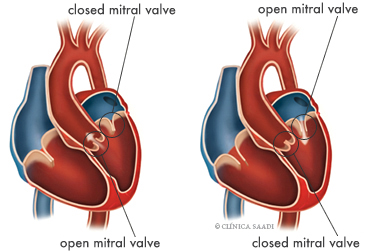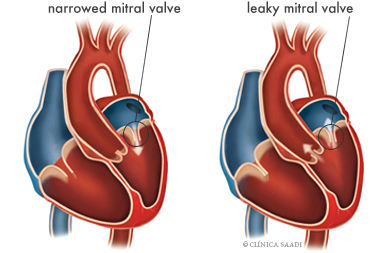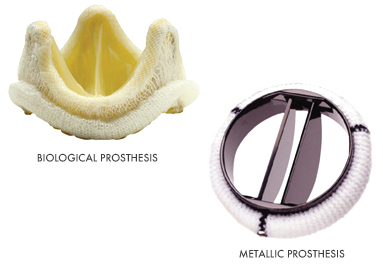Cardiovascular system Valvulopathies
Valvulopathies are diseases that occur in the heart valves. They help the blood to circulate inside the heart and to the two large arteries in our body (pulmonary artery and aorta, which leave the right and left ventricles, respectively). The valves open and close aiming to enable the blood flow in only one direction.
There are four heart valves:
– The tricuspid valve is located between the right atrium and the right ventricle;
– The pulmonary valve is located between the right ventricle and the pulmonary artery;
– The mitral valve is located between the left atrium and the left ventricle;
– The aortic valve is located between the left ventricle and the aorta.

Each valve is composed by leaflets, with the mitral valve having two and the others having three. When such valves are normal, they open and close, enabling the blood passage in certain direction and preventing its return (leakage). The valves may present congenital (birth) or acquire issues: infection, rheumatic fever, or degeneration by aging.
Valvulopathies: Stenosis and Failure
When a valve is diseased, the issues are caused by its inability in fully opening (stenosis) or properly closing (failure) and by performing a combination of both.
In adults, the commonest issues occur in the valves located in the left side of the heart (mitral and aortic). Depending on the injury severity and on its repercussion on the heart size, it can be chosen between a clinical treatment or a surgery.

Intervention-Procedure
When there is need for surgery, the procedure chosen for valvulopathies is the valvar surgery. A valvar plastic surgery can be performed in some cases, and the valve replacement with a prosthesis is indicated when the disease is more advanced.
There are several available prosthesis types. Metallic and biological prostheses are the most used in our context.
The biological prostheses are made of a treated animal (pig or ox) tissue. These prostheses have the non-obligatoriness of using anticoagulant medicines as a potential advantage, but have a limited durability.
The metallic prostheses are made of a carbon alloy, present great durability, and have very little structural issues, but there is need for using anticoagulant drugs for life. Such medicine (warfarin) is taken as a tablet and thins the blood, so preventing the clot formation in the valves.
In both prosthesis types, the endocarditis (valve infection) prevention with antibiotics must be performed before each procedure that causes a potential entrance of bacteria in the blood (for example, dental or urinary procedures).


